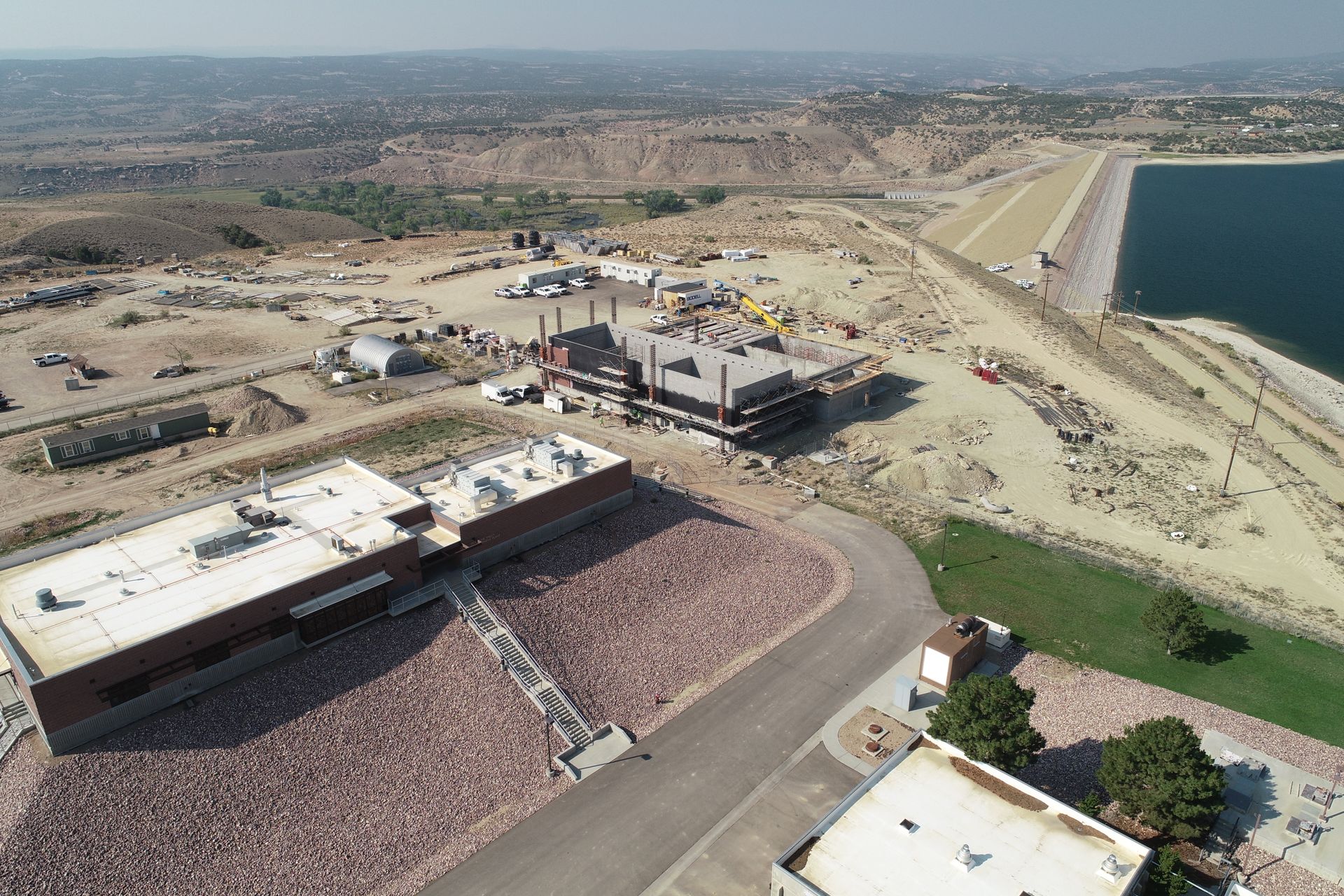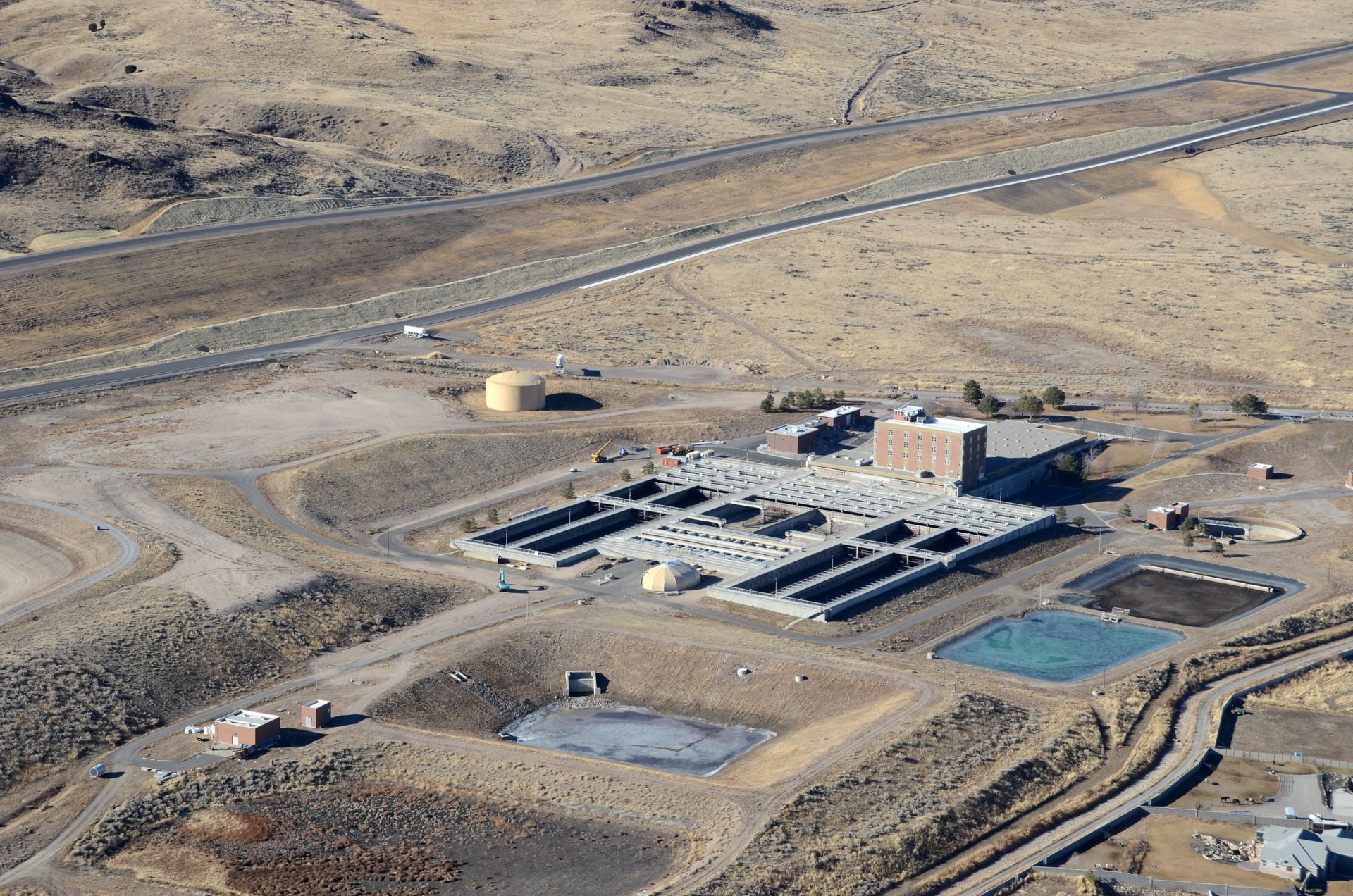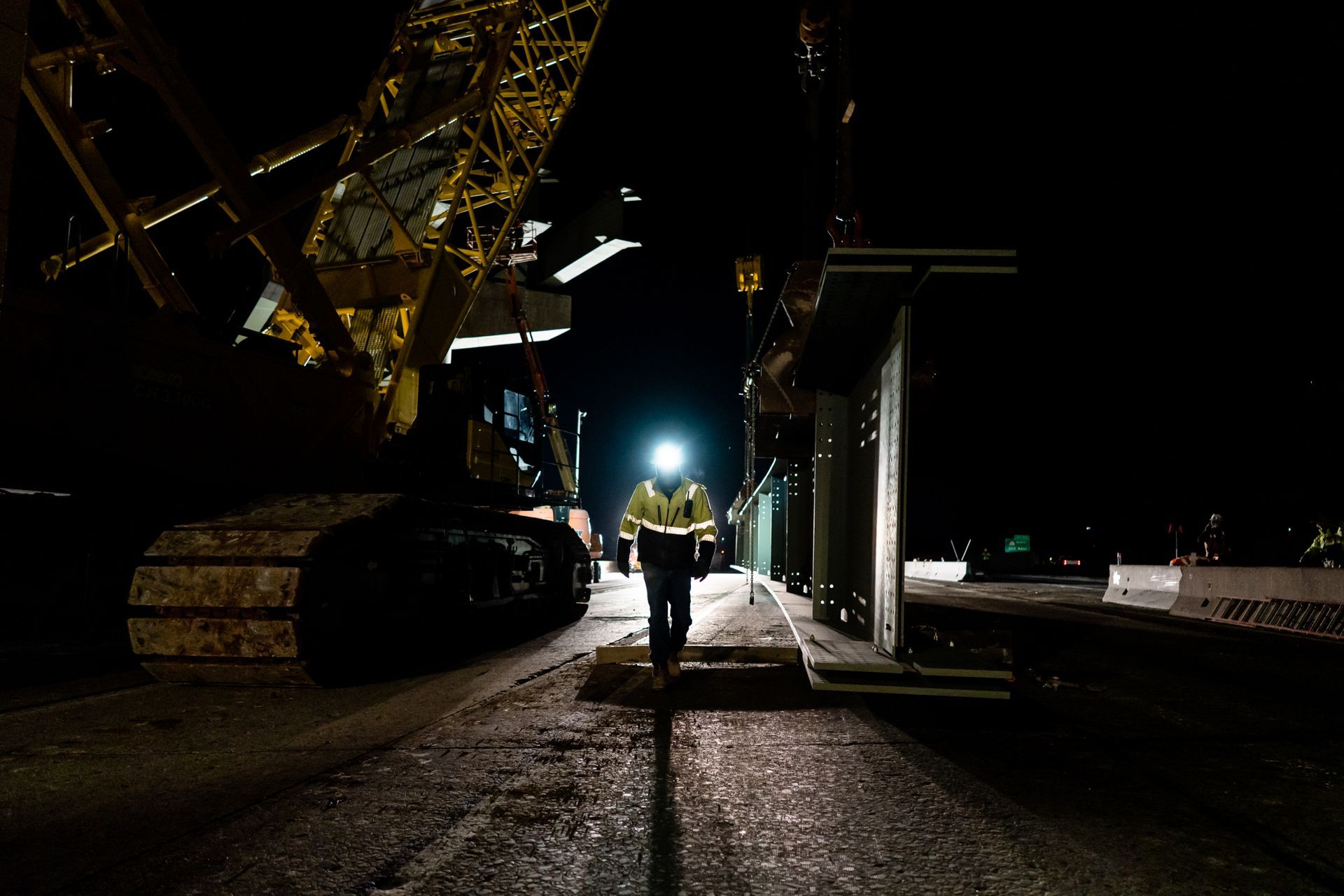Remembering the Priorities
In Utah’s high desert climate, water is a precious resource. To make sure there is enough of it to go around, water conservancy districts are working tirelessly to ensure there is water to meet community needs.
If
there’s a book with some ideas about gratitude and being thankful for the present, it’s “The Good Book.” And if there’s a passage about how the present came to be, it’s this one in Deuteronomy:
“When the Lord your God brings you into the land he swore to your fathers […] to give you—a land with large, flourishing cities you did not build, houses filled with all kinds of good things you did not provide, wells you did not dig, and vineyards and olive groves you did not plant—then when you eat and are satisfied, be careful that you do not forget.”
The religious text above is very careful to remind those hearing the message, “do not forget,” about what it took to get here. In a similar vein, those residing in Utah would be wise to remember that lives enjoyed here came from many decades of decision-making to prioritize for the present day. In this case, the priority was water and water infrastructure in the high desert of the Beehive State.
Projects Make it Possible
As part of the continued prioritization of water, Karry Rathje, Communications Director for the Washington County Water Conservancy District (WCWCD), reported that their team completed the Sand Hollow Groundwater Treatment Plant in 2021. The plant allows WCWCD to pump groundwater near Sand Hollow, treat three million gallons per day currently, and deliver it via the recently completed Sand Hollow Regional Pipeline to high growth areas in the county.
Just north of Rathje’s WCD, the Central Iron County Water Conservancy District (CICWCD) Public Relations & Conservation Manager Jessica Staheli mentioned that they hold up their duty to Iron County and the state, too. Much of their recent efforts have been pushing “recharges”—spreading or impounding water on the land. Recharges increase the water infiltration through the soil that percolates to aquifers. She said that these recharges are used to manage excess runoff, prevent flooding and downstream erosion, improve water quality, and ultimately balance aquifers.
The Quichapa Recharge Project just east of Cedar City is one of the most complex of these recharge facilities in the Cedar Valley. The water is first diverted from Coal Creek into a settling area that feeds into the “lazy river.” That snaking river was designed so that dirt and other substances in the water can settle instead of being taken downstream. After it moves through the lazy river, it is pumped to a settling basin where it can seep into the ground, or it can be diverted to an agricultural operation and used for irrigation.
Further north, Central Utah Water Conservancy District (CUWCD) also remembers its duty to both present and future water needs. They have developed the Central Utah Water Conservancy District Water Development Project (CWP) over the past 15 years. The CWP is currently capable of delivering up to 53,000 acre-feet to growing areas in Utah and Salt Lake counties.
But remembering and awareness aren’t enough. As Deuteronomy stated, there are wells to dig. CUWCD’s metaphorical well was the replacement of the North Fork Siphon (UC&D 2021 Most Outstanding Water Project) which was completed just over a year ago.
The project was a massive undertaking according to KC Shaw, Deputy General Manager for CUWCD. It included the successful installation of 154 pipe segments on two slopes (with up to 70% inclines), where 700-plus feet of elevation difference exists between the siphon inlet/outlet and the valley bottom. Due to its steep slopes, contractor Whitaker Construction utilized a novel crane system to deliver individual pipe segments, each weighing up to 42,000 pounds.
The new 84-inch diameter, welded steel pipe siphon allows CUWCD to continue providing customers with 50,000 acre-feet of water each year. As an essential component of the Strawberry Aqueduct and Collection System, the siphon collects and transports water from the Uintah Basin to Strawberry Reservoir, where it stays before the water is delivered to the Wasatch Front. Through careful planning and consideration, CUWCD and others are bringing much-needed infrastructure, and water, into communities across the state.
How Projects Come to Be
Water infrastructure is based on several factors, including federal, state, and local laws. Beyond the law, most water development projects are required to complete a thorough permitting process that includes an analysis of supply reliability, demand, quality, rights, engineering feasibility, costs, and environmental impacts, among other issues. It’s an arduous process to bring these projects to completion, so moving forward is essential once the vetting process is completed.
Linda Townes, Public Information Manager for the Jordan Valley Water Conservancy District (JVWCD), said they are looking forward to a few projects after going through those necessary processes. One of the big-ticket items is expanding the Jordan Valley Water Treatment Plant from 180 million gallons per day to 220 million gallons per day (roughly equivalent to 246,000 acre-feet of water with the expansion).
“Identifying and replacing aging infrastructure is quickly becoming a priority for water providers throughout Utah,” said Shaw. All of the WCDs are dialed into making seismic improvements with existing infrastructure and building new infrastructure. One example project is the 3200 W 10200 S Booster Pump Station that will replace an existing booster pump station and support the growth inside the JVWCD.
It’s all a delicate balance of relationships and abilities. Rathje explained that districts are responsible for the planning, development, conservation, and protection of water resources while elected officials and public buy-in help ensure these efforts can move forward quickly and efficiently. WCDs and their staff understand their vital role and want the public involved in the future of water, especially as the state is affected by drought.
Setting a Standard
Townes said that combating drought can be done in two ways: through knee-jerk responses, or through resiliency. “Typical responses in the past have been asking people to use less water, usually on their lawns,” she said. The problem? Asking people to use less water “is not a long-term solution. Resiliency is changing our lifestyle—specifically our landscaping.”
Rathje in Washington County said that the buy-in down south has been good—and getting better. “Washington County used 400 million gallons less in 2021 than in 2020 despite a 5% increase in population,” she said, amazed by how positively residents and leaders in Washington County have responded to conservation efforts.
Townes said that Water Efficiency Standards (WESs) are the next generation of water conservation tools. Implementation of these WESs acts as a regulation or mandate. Since all of the easily accessible water has already been allocated or is currently in use, adhering to these standards helps member agencies move forward as they buy water from the WCDs.
What are these standards? They range in purpose from installing low-flow toilets and showerheads in new and future construction to having grass turf in only 35% of the residential landscaping or 20% of commercial landscaping. It may be a tough future to consider for some, but the long-term strengthening of communities should be well worth the mutual sacrifice. After all, that’s how resilient communities are made.
CICWCD in Iron County succeeded in designing standards for new construction, too. They passed a resolution in 2018 that promotes conservation through developers. Developers can transfer fewer water rights in exchange for water-wise covenants, conditions, and restrictions (CCRs) that are required for subdivisions. The CCRs restrict lawn size, and the residents are billed on a stricter conservation tier to help promote conservation and reduce wasteful water use. “We have had many developers participate in this resolution since it was passed,” said Staheli.
With reservoirs hovering just slightly above 50% of their capacity, responding with conservation is essential. Referring back to the passage in Deuteronomy, there are trees to plant, cities to build, and wells to dig, as there are still generations to come depending on the actions of those currently here. Conjuring more water may be impossible, but drought resiliency is imperative.

It's been more than three decades—1993, to be exact—since the non-profit U.S. Green Building Council (USGBC) was co-founded by S. Richard (Rick) Fedrizzi, David Gottfried, and Michael Italiano, which ultimately spawned the revolutionary Leadership in Energy and Environmental Design (LEED) in 1998, a points-based rating system that offered legitimate third-party verification of green buildings. The goal of the fledgling association was simple: Increase overall sustainability of new construction projects including improved energy efficiency and creating a better, healthier environment for building occupants—all with the goal of reducing construction's carbon footprint. At the time, it was considered a bold initiative, with significant potential real-world benefits to the A/E/C industry. It took several years for the LEED initiative to get off the ground, but by the turn of the 21st Century, the phenomenon started taking root in the design community. "When LEED began in the late 90s/early 2000s, it was an incredible ambition to transform the building industry and to bring sustainability into the conversation," said Whitney Ward, Principal with Salt Lake-based VCBO Architecture and one of the firm's leading sustainable design experts. "[USGBC] had some big hurdles to overcome, including a general lack of knowledge about or mistrust of global warming and climate change." Ward said the U.S. Green Building Council and the LEED rating system had an immediate and profound effect on: —Creating more transparency in material manufacturing and getting manufacturers to care more about developing more sustainable/greener materials (carpet, flooring, paint, textiles, etc.) —Highlighting the true value of sustainable buildings through "incredible marketing efforts" and spurring owner demand. —Becoming the "go-to" third party certification agency for sustainable buildings. "The environmental consciousness of designers, builders, and owners [...] has really evolved to (where we say) 'we're going to do the best we can'," said Ward. "LEED has been an incredible tool in reshaping the industry and helping manufacturers, contractors, architects, and other industry partners understand the impact that their decisions have on the environment and on energy use," said Peter McBride, Principal with Salt Lake-based Architectural Nexus. "The conversation 20-30 years ago used to be 'how much does this cost?' or 'what is the percent increase cost in doing (LEED) vs. the baseline?' As each version of LEED established itself as an industry standard, the answer has been that LEED Certified or LEED Silver costs no more—or slightly more—than a baseline design. With each subsequent version release, LEED continues to push the boundary—sustainable design is now the baseline." "LEED has increased awareness for sustainability and energy conservation in buildings," added Chris Cox, Building Performance Program Manager for the State of Utah Division of Facilities Construction and Management (DFCM). "As far as the biggest pro, LEED brought the integrated design process to the forefront—user groups, owners, maintenance teams, architects, engineers, and builders work together in achieving the best outcomes."
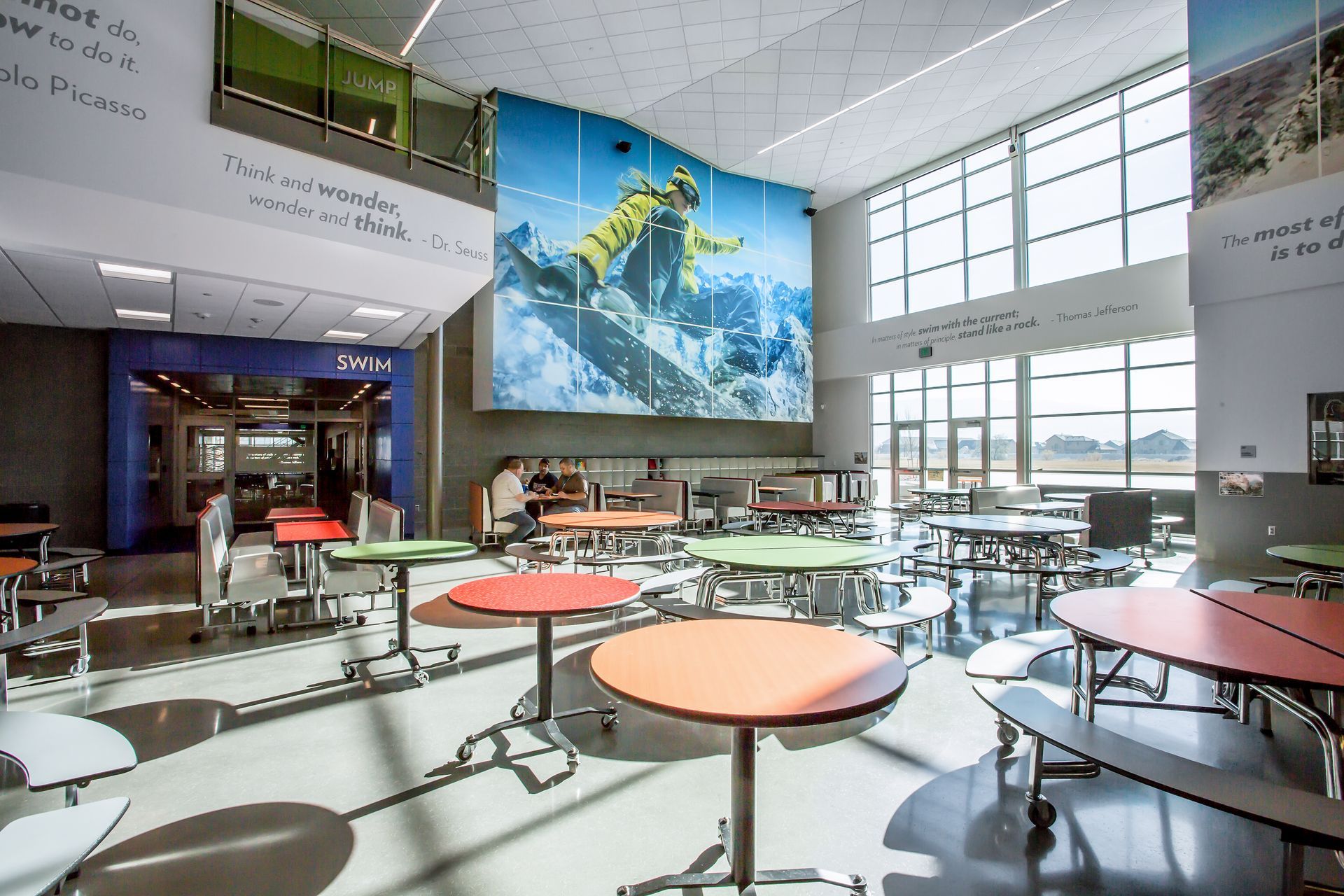
UC+D: How was it working with Gary Payne for so many years? Turner: His impact on the Davis School District will last many years due to the buildings that were constructed during his time. Rather than being satisfied with the status quo, we worked to develop school buildings that would accommodate innovate teaching styles and would be safe, economical, and exciting places where children would want to be. UC+D : It's been 10 years since Odyssey Elementary was completed. What is the analysis of how it has performed? Turner: It is not very hard to create a truly Net-Zero building. We can produce enough electricity to offset the electricity used, plus the natural gas usage—however, the power company will not give us credit for electricity generated above what we use. An energy model was used to estimate the Energy Use Index (EUI) of Odyssey Elementary. It predicted that our EUI would be 22. The first year it was actually 17. An ideal Net-Zero building would not have any natural gas usage. We elected to install a gas boiler in the building to help control the "demand" charges that would occur on cold days when all the heat pumps would start up in the building. For 2023, the PV array produced 213,066 kWh; we used 188,088 kWh in electricity. We used 421 decatherms of gas, giving us a cost of $0.33/sf for energy usage, compared to an average building in the district (about $1.25/sf). UC+D: What is the greatest success with Odyssey? What would you do differently? Turner: Odyssey Elementary, with all its energy-efficient features, provides an excellent educational experience that benefits both teachers and students. The building accommodates different learning styles, collaboration, and individual exploration. First and foremost, the building is a school, albeit one that is very maintainable. There is not anything I would do differently. Since this was the first of a series of prototypes, a lot of thought from a lot of people was put into it.

Before the Logan Library ribbon-cutting ceremony began, two children eagerly ran past the staff toward the children's section. Inside the children's area, two girls, with their arms linked, skipped past the shelves of books while a little boy raced along the cobblestone path that weaves through the bookshelves. A young girl in the reading nook called her mom over to see, and a little girl with pigtails used the miniature-sized door into the children's section to enter the playhouse. The ribbon-cutting began in the lobby and adjacent community room, which were filled with patrons of all ages despite the stormy weather outside. As they entered, a string quartet greeted people with lovely music, and cameras lined the walls for press coverage; even the local firefighters came to show their support. Before the library's opening, Mayor Holly Daines shared how the facility was designed and built with modern and historical intentions. The mayor and various library donors spoke excitedly about the new library before the giant scissors were used to cut the ribbon. Immediately after, patrons with arms full of books were perusing the bookshelves. Children read in the aisle, too excited to move to a table, while parents formed a line waiting to check out books for the family. Quiet laughter emanated from the "teen and tween" section, and Utah State University and the Logan Latter-day Saint Temple are visible from the third-floor windows. From 1985 to 2021, the previous library was in an old and converted Sears building. For the last 20 years, Logan City leaders have discussed providing residents with a modern library. "The library was old and dark, and the systems were failing. It never was a purpose-built library," said Daines.
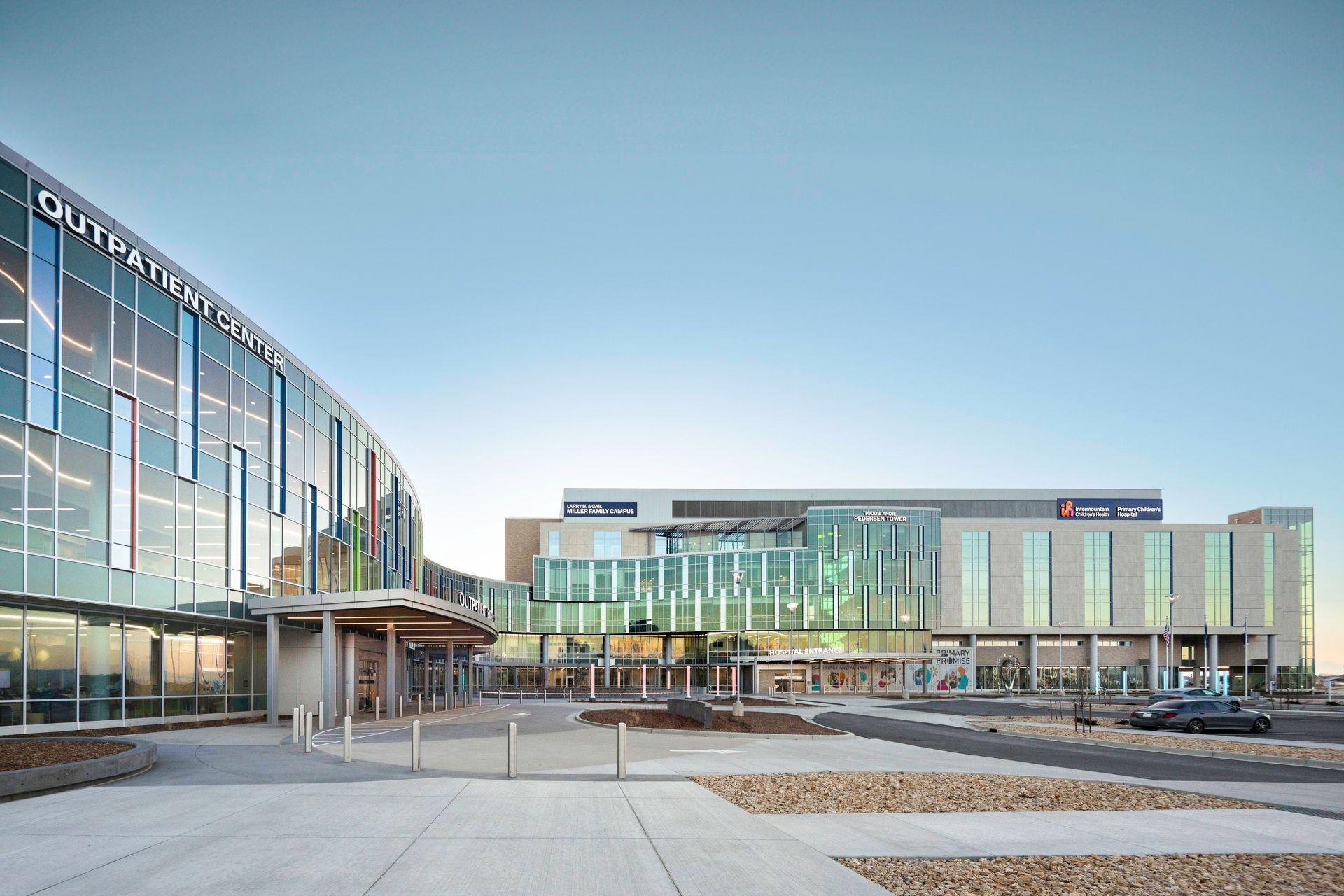
Since its inception more than a century ago in 1922, Primary Children's Hospital has set a standard for pediatric healthcare excellence by continuing to produce world-class facilities throughout the Beehive State. The latest cutting-edge offering is the Intermountain Primary Children's Hospital, Larry H. & Gail Miller Family Campus in Lehi (PCH Lehi), a project of significant importance to this burgeoning city, one that ranks among Utah's fastest-growing communities. Aided by a $50 million gift from the Miller Family Foundation, this landmark five-story, 486,000 SF, 66-bed project features the latest and greatest in medical technology in a building that is fun, playful, and energetic, with colorful design elements playing a vital aesthetic role throughout. The value of a project on this level is beyond measure, said Blake Court, Vice President of Salt Lake-based Jacobsen Construction. "Primary Children's really has a special place in my heart—they are a very special entity," said Court, a veteran healthcare professional with nearly 35 years of overall experience, including 19 years at Jacobsen along with stints at the State of Utah Division of Facilities Construction and Management and the Department of Veteran's Affairs. "It has been embraced by the community. Lehi and the surrounding areas are growing so fast. It's just amazing to see what's going on there." "It's a once-in-a-lifetime project," said Jeff Pinegar, Principal with Salt Lake-based VCBO Architecture, who partnered with Page Southerland Page of Houston on an exhaustive 19-month detailed planning and design process to create a comprehensive hospital and clinic in one congruous structure. "To see these kids have the spirit they have [...] it's a life-changing project. I'm so glad I had the chance to be part of it. I love the challenge of healthcare." As with most construction projects that originated during the pandemic, PCH Lehi kicked off in August 2020, which proved immensely challenging from the onset in regard to worker health and volatility of material cost and availability. "Everyone knows the story—people got sick, it spread to co-workers, and we would lose entire crews [of subcontractors]," said Court. "We would constantly be down manpower. And then [material] lead times just skyrocketed. Materials that we normally get off the shelf went to a year-and-a-half overnight because manufacturing plants were shutting down. Add in price escalations and it was just a trifecta."

At an age when most folks are kicking off their post-retirement "golden years", 66-year-old Cal Wadsworth is attacking this chapter of his life with the zest of a man reborn, having fired back up his general contractor firm in 2020 with a vision of eventually turning it over to the next generation. It speaks to his resolve as a businessman and construction lifer, as a parent who wants to do right by his children, but even more as a person who has rallied/is rallying back from a challenging period personally, which coincided with the great recession and led to him shuttering Cal Wadsworth Construction in 2010. "I'm realizing more with time that I'm not in control as much I thought," said Wadsworth. "There is the realization that you've got to give up control. You can't base all your happiness on the money that comes from this business. Learning to live with disappointments is something I'm getting better at. Learning to live with them and not let them ruin my confidence, or my ambition. I live by the 'Serenity Prayer'."
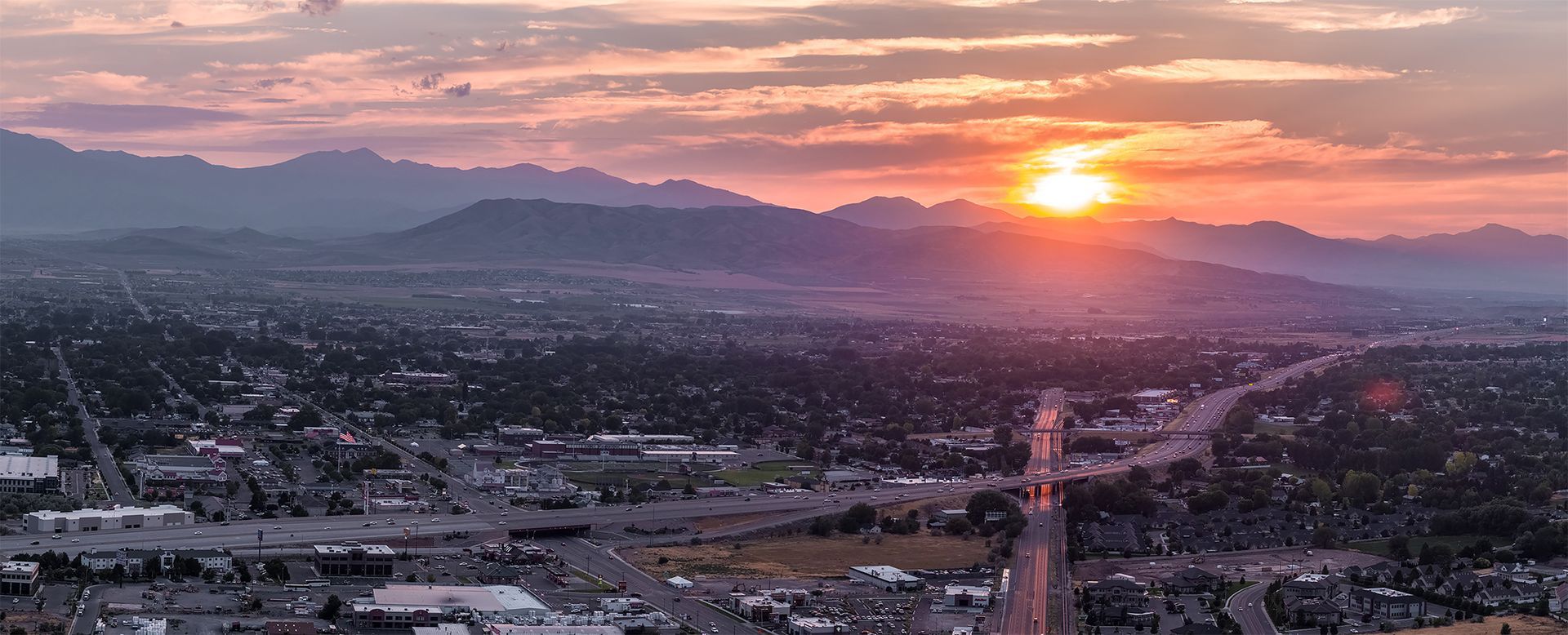
Adobe’s 680,000 SF Lehi Campus is an iconic project in Lehi that was completed in two phases, with the first phase opening at the beginning of 2013 and signaling a new era of development along the Silicon Slopes corridor. (photo by Dana Sohm) Inset: Aerial view showing an illustration of Texas Instruments’ new 300 mm semiconductor wafer manufacturing plant—referred to as “LFAB2”—which broke ground last November and marks the single largest investment (over $11 billion) in state history. (photo courtesy Texas Instruments)

Work continues to grind forward on the mammoth new Salt Lake City Water Reclamation Facility (WRF)—a critical $850 million project being built by a joint venture of the Salt Lake regional offices of Sundt Construction and PCL Construction that will replace the current facility in North Salt Lake once it's turned over to SLC's Department of Utilities (SLCDPU) in July 2026. As it stands, this is the second-largest project in City history, trailing only the recent $2 billion-plus Salt Lake International Airport Redevelopment (Phases 3-4 ongoing), and one of the most technically challenging projects in the state. "We are up for the challenge every day—the magnitude of this thing is unreal," said Manny Diaz, Project Manager for Salt Lake-based Sundt, as he drove around the massive 30-acre site in late-January, a worksite teeming with 300 current employees (it will peak at 400 workers this summer) and myriad complicated structures being built simultaneously. Diaz is a long-time veteran of the water reclamation facility industry—this project marks plant No. 26 in his own personal history—and he was brought in a year ago by Sundt because of his expertise. When he arrived in Salt Lake at the beginning of last year, it was right smack dab in the middle of what proved to be a record-breaking year for snowfall. "It was quite a welcome to Utah!" Diaz chuckled. "We keep very close tabs on the weather." And while crews haven't been subjected to the same inclement weather this winter, site conditions are still generally wet and muddy, and the difficulties associated with building the various structures are constant. Crews are nearing the halfway mark, so certainly it's a milestone worth acknowledging, even though a mountain of construction is still left to climb. "It's such a huge accomplishment to be this far," said Jason Brown, Deputy Director of Public Utilities for SLC. "We've faced a lot of challenges, Covid, material shortages [...] it's amazing to be part of a team that works so well together. We still have a long way to go, but we'll get there. We've made a lot of progress and should be proud, but it's hard to celebrate success with so much work still ahead." Diaz, along with PCL Project Manager Shayne Waldron, said crews recently achieved a major milestone: one million hours worked, a notable accomplishment. “Achieving the ‘one million hours worked’ milestone is a testament to the coordination and collaboration required of a project this size," said Brown, adding that the new WRF project benefits from regular and ongoing staff collaboration, under the watch of Sundt/PCL, designers AECOM and Jacobs, and SLCDPU leadership. “This [milestone] is the culmination of many different efforts,” added Mauricio Ramos, District Manager for PCL’s Civil Infrastructure Division. “From local engineers to pipe layers, journeymen, construction trade workers, foremen, and general laborers, every team member has been instrumental in reaching this benchmark. The collaboration between PCL and Sundt has been a testament to our shared commitment to excellence and innovation.” "Our crews are working together seamlessly to ensure that the final product meets the goals and needs of the community," said Sam Reidy, Senior VP and District Manager for Sundt. "Celebrating this milestone recognizes the hard work and commitment each member of the project team has made to this project and the Sundt/PCL partnership." Diaz and Waldron said soil conditions challenged the team right out of the gate and took significant time to stabilize the site. "At the very beginning, the project was designed to be built on top of where the sludge beds were at, but it turns out the sludge beds were on shaky ground," said Diaz. "This whole area is young in age, so it's all soft clays and sands," added Waldron. "Soft clays are compressible, so the big issue is settling. It would have [cost] $80 million in piles to shore it up, and then in between buildings you have all the pipe and utility duct banks, so they would almost need to be built on piles." Waldron said the idea came up to pre-load the whole site, where crews built a flat pad, installed wick drains, then pre-loaded 30 ft. of dirt, with drains going down 125 feet and providing a way for water to be pushed out of the clay. "We had over seven feet of settlement," said Waldron. Crews also set up sophisticated monitoring equipment "to see where ground was settling and what layers were compressing the most. It was really scientific—a lot more than I've seen before." Diaz said it took six months to haul in the fill dirt where it remained in place for eight months, then took another six months to excavate out—close to one million yards of total material. It was an exhaustive process, with an average of 400 trucks per day and close to 500 trucks hauling 18,000 tons on the best day. Having a cohesive, highly collaborative team of designers and construction experts has been a boon to the project schedule. Once completed, Salt Lake City’s new WRF will serve over 200,000 residents as well as those who commute downtown to work or visit Utah's capital. It will replace the City’s current—and only—wastewater treatment facility, which is over 55 years old and near the end of its service life. Maintaining reliable operations at the existing facility while constructing the new WRF nearby has been critical for the project’s success. Since breaking ground in 2019, the project team has completed approximately 65% of structural concrete work as well as soil mitigation, deep foundation work, and the installation of underground utilities. In late January crews began excavating dual 63-in. diameter pipelines, along with a 78-in. effluent pipe that is being hauled one giant piece at a time from Canada, a new type of corrugated HDPE with welded joints that should provide greater durability. All in all, crews will ultimately pour 93,000 CY of concrete and install 22 million pounds of reinforcing steel, along with 89,000 LF of underground pipe ranging in diameter from 1.5-in. to 78-in. "The camaraderie among the team members allows for a very cohesive team," said Diaz. "The only way you can tell who works for who is by the color of the truck. We have a 'one project' mentality. The complexity of the job and being trusted to lead this effort [...] have been [important] for me. It's been a great job so far." Diaz, who said his first wastewater treatment plant was in North Miami Beach in the late 80s right after he graduated from college, hopes to remain in Utah once this job is completed and turned over to the client by mid-2026. “I plan on staying here and continue to work on treatment plants in Utah,” he said. “There’s a lot of work here. We have vast experience, and we have a lot of people who want to be in Utah—it’s a great place to live. Let’s do it!”
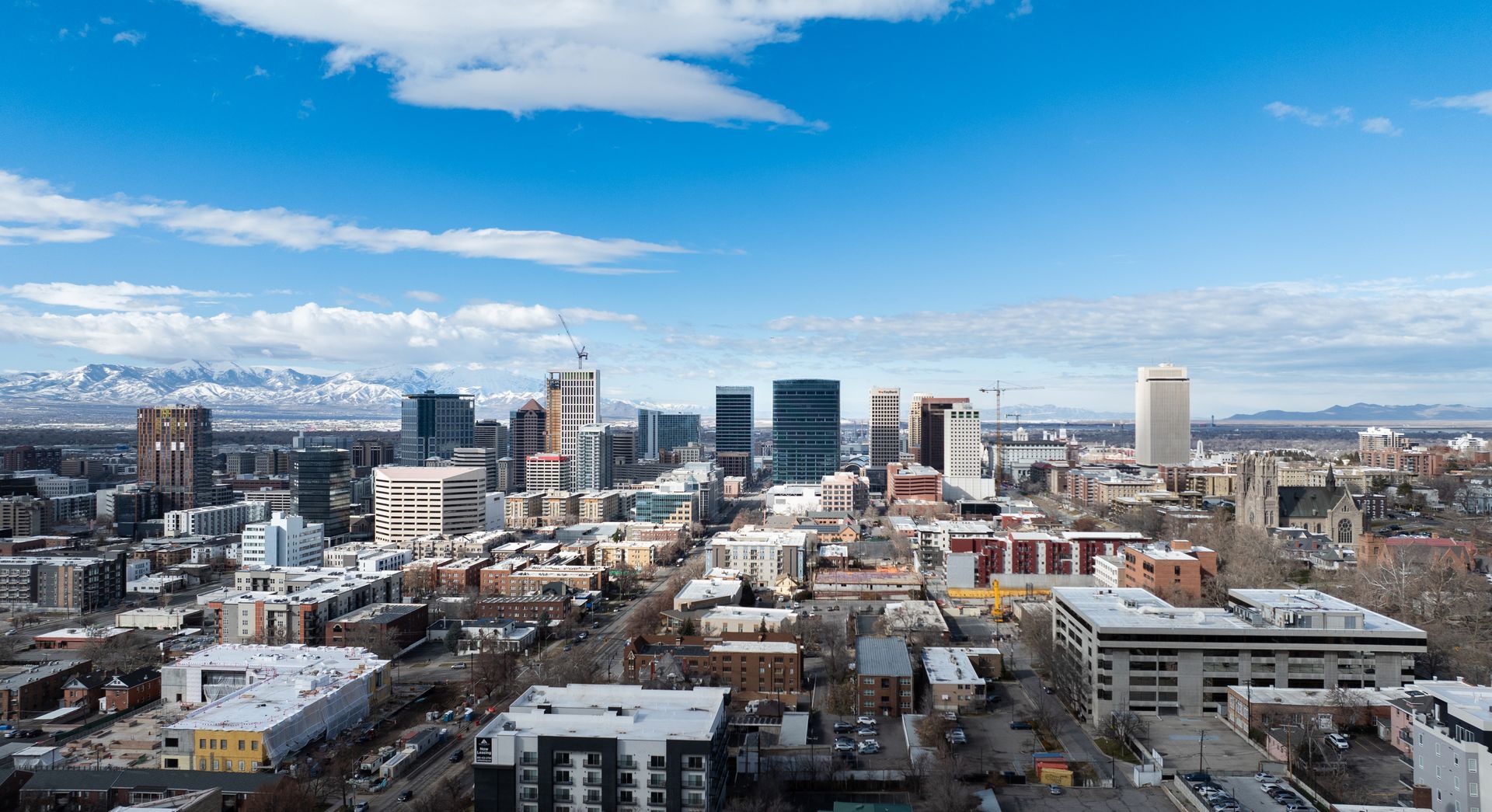
It's been more than 45 years (1978) since The Cars released their debut album highlighted by the wildly popular song Good Times Roll, but if there was ever a tune to sum up the general sentiment of local A/E/C professionals regarding Utah's 2024 Economic Outlook, Good Times Roll would be up there. "Our members are expecting another good year," said Joey Gilbert, President/CEO of the 650-member Associated General Contractors (AGC) of Utah. "For our contractors in both the building and highway markets, the outlook is good. Many still have decent backlogs to keep them busy through 2024 and in some cases, even 2025. The public sector is strong, and on the private side, owners are still investing in some big projects." Robert Spendlove, Chief Economist for Salt Lake-based Zions Bank, reported at the AGC's Economic Outlook meeting last November that commercial construction was up 1.6%, while Utah as a whole reported 2.5% growth overall, and believes both will continue to fare well in 2024. "Utah also has one of the lowest unemployment rates in the U.S. [2.5%]; when it gets too low, you get real struggles of labor shortages," he said. "It prevents companies from growing and is one of those defining economic characteristics of this past cycle. If we get above 4-5% we get nervous that it's a sign of a recessionary environment." Spendlove said tailwinds include strong consumer spending, a strong labor market, and an overall robust economic Intermountain West region, while headwinds could include a lack of new workers, government shutdowns, energy prices, and international uncertainty. Another bonus is that Utah remains one of the strongest states economically, regardless of what is happening nationally. "I would say uncomfortably optimistic," countered Dejan Eskic, Senior Research Fellow for the Kem Gardner Policy Institute at the University of Utah, citing a number of factors potentially slowing down the design and construction industry such as housing, labor, and material price fluctuations—basically the same post-Covid headwinds Utah-based firms have been battling the past couple of years. "On paper, we should have a decent economic year in Utah. Because it's an election year, it brings more optimism generally. Stock performance does better in an election year, jobs do better. You have to stick to those basics. Eskic has been with the Gardner Institute for eight years, including the past five in his current role, explained that some of the uncomfortableness facing the local economy stems from having virtually no labor pool in certain segments, including construction—which continues to face a dearth of skilled craftsmen in virtually all subcontractor trades. "We still have red flags," he said, noting concerns with still-high housing costs. "Maybe it's too early to call if we've cracked inflation. 2023 ended up way better than anybody expected—it was supposed to be a recession year, but the recession never came, and the labor market exceeded expectations. "I'm bullish on Utah," he added. "I look at the numbers and how we're going, and we're in a very strong growth pattern with the economy. Things will continue to expand." Indeed, despite nasty rising interest rates that put the brakes on some speculative development projects, Utah-based owners continued to plow ahead on projects, and by-and-large most market segments continued to see a healthy amount of activity as firms set about tackling healthy project backlogs.
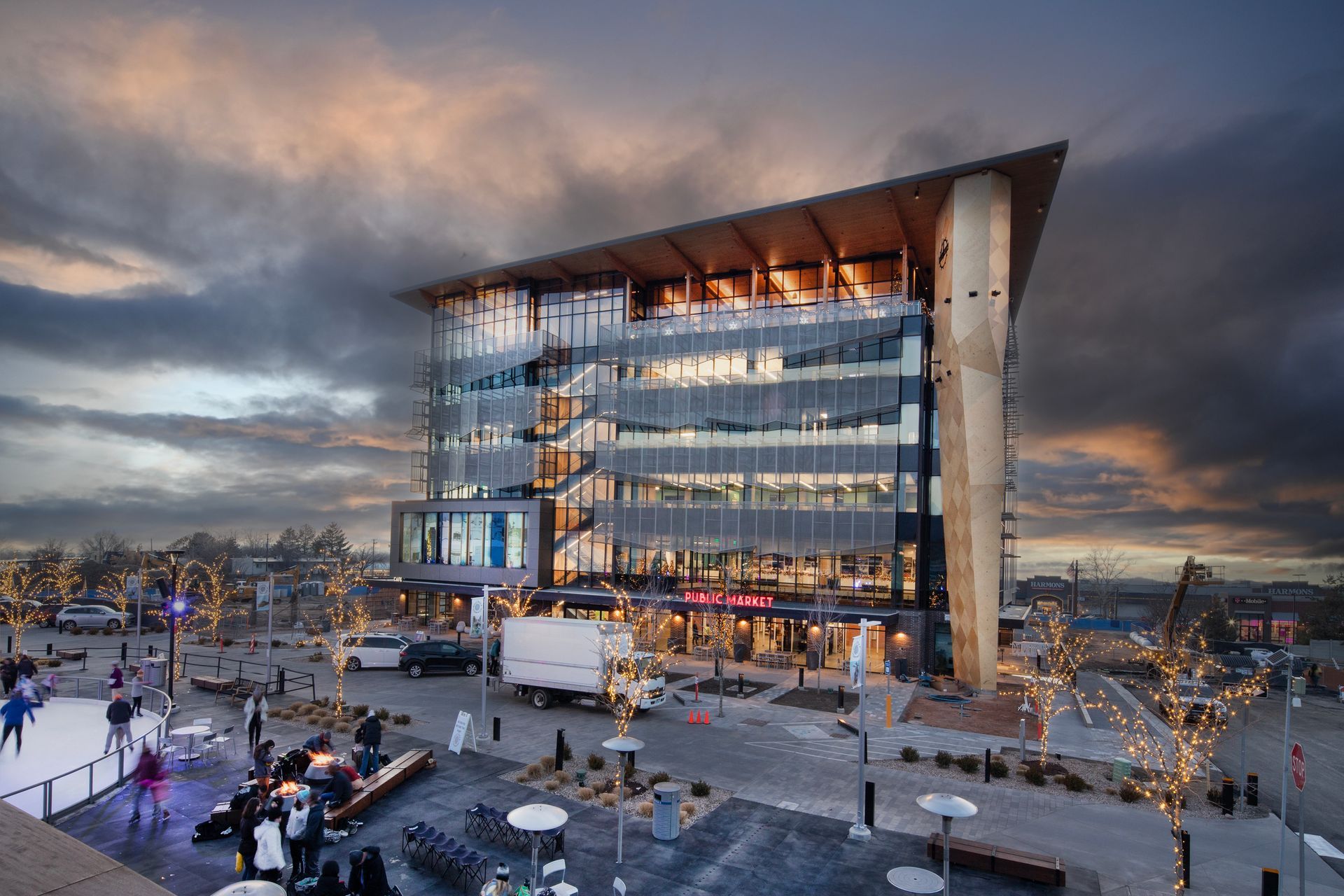
It's been a long time coming for elected officials and the citizens of Millcreek City, but their beloved $45 million, nearly 80,000 SF City Hall is finally complete, ending a lengthy five-year process that tested all parties involved but produced an awe-inspiring six-story building that will serve as the public heart of this rising community southeast of downtown Salt Lake. "It's awesome!" gushed Jeff Silvestrini, in reference to his view as he peered out across the Salt Lake Valley from his fourth-floor corner office, with captivating views via a complex glass curtain wall system highlighted with an intricate, highly functional screen shade. As the only mayor Millcreek City has known during its brief seven-year existence (it was incorporated Dec. 28, 2016), Silvestrini was recently re-elected for another four-year term (he ran unopposed) and has been a driving force behind this new project. "I could see this [view] was going to be amazing when I climbed up the crane when the concrete structure was going up. Standing on the exposed sixth floor before the curtain wall went up, I was humbled at this monumental undertaking for a new city. What we do as a city government is serve the people. We can serve the people much better in a facility like this." Unique Municipal Design Fosters Public Engagement with a "Downtown" Feel Millcreek City Hall builds upon the momentum created by the adjacent Millcreek Common to the east (opened in December 2022) to create an actual "Downtown" or "City Center" space at the bustling area of 3300 South between 1300 East and Highland Drive, which includes a host of exciting new nearby multi-family and mixed-use developments under construction. The project leverages a public-private partnership (PPP) with a local developer on an adjacent shared parking garage, along with the much-needed residential housing. Silvestrini said City leaders "did not contemplate putting City Hall here" initially, but public feedback made it clear residents wanted a downtown area to call their own. Millcreek Common—replete with an ice ribbon, splash pad, and room for food trucks—was planned as a public plaza space and has been wildly popular since its completion in late 2022. Residents also wanted City Hall to have real spaces for the public, not just a strictly-government facility, which provided exciting design opportunities for Salt Lake-based MHTN Architects, which initially worked with City officials in 2017-18 on a City Center Master Plan, which came about via a grant through the Wasatch Front Regional Council, according to Ryan Wallace, Principal-in-Charge for MHTN. "It's located roughly in the geographic center of the community and easily accessed by vehicle, transit, and active transportation—it's something that can unite the community," said Wallace. "The client has created four projects in one," aided by a vertical building mixed-use approach on the narrow footprint, a key to allowing optimum future adjacent development. "We realized early on that there was an opportunity to build a true civic center," added Silvestrini. "The more we thought about it, the more it made sense." The commitment to having a true community building is evident on the first floor, which includes a coffee house, a restaurant, and a flex public market with rotating businesses. "[City leaders] wanted an activating ground floor use that would support their idea of a downtown," said Wallace. "They didn't want City Hall to only be active 8-to-5 and then a dead zone at night." City officials and MHTN staff also drew inspiration on a tour of the new City Hall in Lenexa, Kansas, which includes adjacent common space and a ground floor retail/public market. "Everyone seemed to be thinking on the same wavelength," said Peggy McDonough, MHTN President who served as Project Executive on Millcreek City Hall. "We all felt like this was a completely unique project, unlike any other city hall that we've been a part of, and the second that has a market level. It's being looked at as an example of good development." While level 1 is sure to be a hit with Millcreek residents and visitors over time, levels 2 through 5 showcase the versatility and functionality of the project, with all essential government functions for Millcreek City, along with Unified Police and Community Emergency Response Team (CERT). Unified Police is housed on level 2 and utilizes a one-level sally port/private garage under the building (another bonus of the PPP parking garage). Millcreek City is housed on levels 3-5, with the top floor—level 6—serving as prime community space highlighted by the Grandview community room and its opulent Cross Laminated Timber (CLT) roof that evokes a natural warmth throughout the space.









